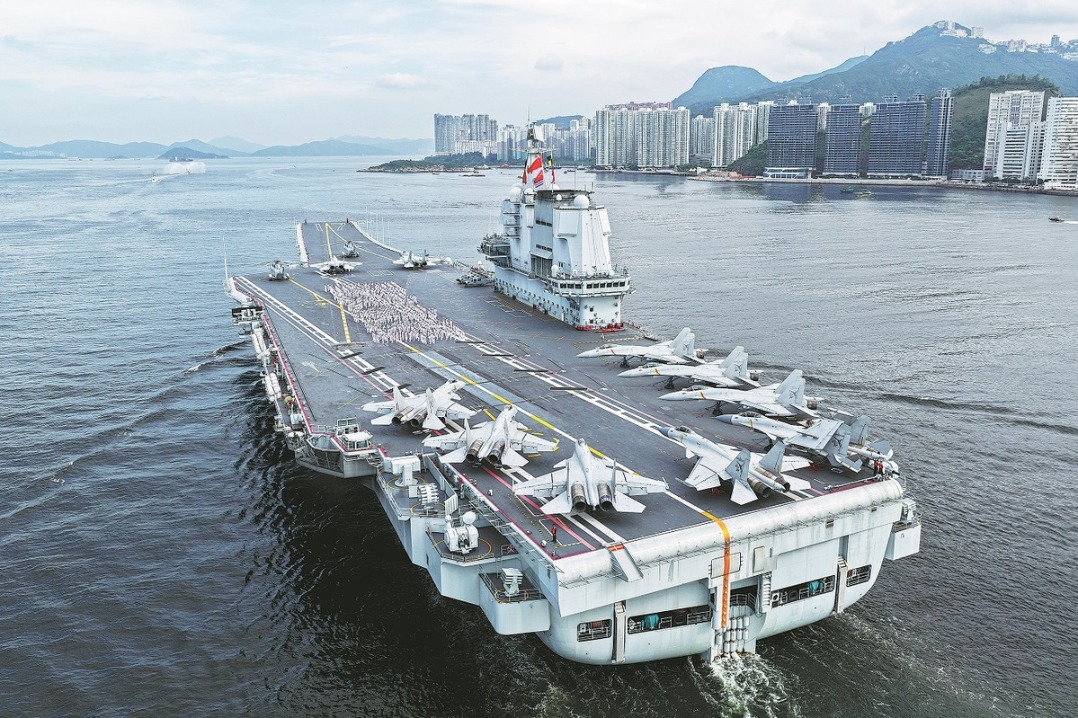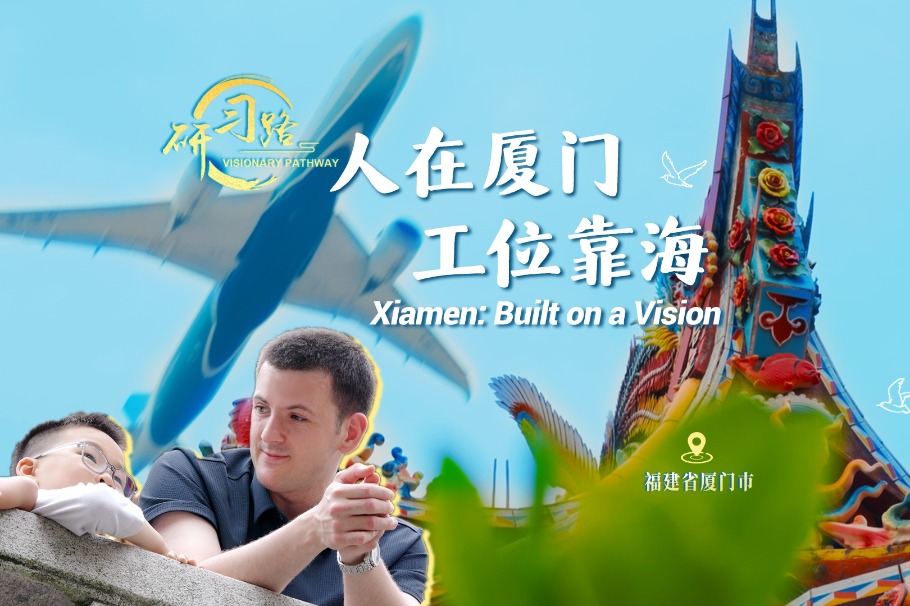The 'Shanghai Five' at 25
The solution of border issues in 2000 led to the creation of a new type of transregional cooperation organization


Editor's note: The world has undergone many changes and shocks in recent years. Enhanced dialogue between scholars from China and overseas is needed to build mutual understanding on many problems the world faces. For this purpose, the China Watch Institute of China Daily and the National Institute for Global Strategy, Chinese Academy of Social Sciences, jointly present this special column: The Global Strategic Dialogue, in which experts from China and abroad will offer insightful views, analysis and fresh perspectives on long-term strategic issues of global importance.
Twenty-five years ago, on July 5, 2000, the heads of Kazakhstan, Kyrgyzstan, China, Russia and Tajikistan gathered in Dushanbe, the capital of the Republic of Tajikistan. This was the fifth meeting of the leaders of the "Shanghai Five". The first was held in Shanghai in 1996, subsequent meetings were successively convened in Moscow, Almaty and Bishkek. The Dushanbe meeting became a turning point not only in the history of relations between the "five" countries, but also had great significance for the future development of the entire region of Eurasia. The summit initiated interaction between the five states within the framework of a new type of international partnership, which is known today as the Shanghai Cooperation Organization.
Such organizations do not appear out of nowhere. They are the result of conscious steps toward each other by state leaders of the countries concerned, with the aim of advancing a common agenda on the basis of mutual respect and trust in areas where common interests were congruent with national ones, and where the combination of efforts brings a greater effect in finding solutions to transboundary problems and countering external threats. At the same time, these "small steps" toward each other manifested in the establishing of such groupings can gradually turn into large joint projects, and interaction in individual areas can develop into a comprehensive partnership for many decades to come. That is what happened with the "Shanghai Five", which was created to resolve border issues left over from history, and then evolved into the SCO.
Reviewing the historical experience of the "Shanghai Five" can be of great importance for the building of new interstate relations in the modern world, which is in search of a more just international political and economic order.
The "Shanghai Five" was created largely due to the flexibility and constructiveness demonstrated by China, which was interested in settling the border issues with Russia and the three newly independent countries of Central Asia. Despite all the objective difficulties of the negotiating process, the participants demonstrated the highest degree of mutual respect, mutual understanding and the ability to listen carefully to each other's arguments and, if they were justified, to take them into account. There were no seniors and juniors, strong and weak at the negotiating table, as all parties felt equal, met each other halfway where it seemed possible and found mutually acceptable solutions. As a result, the border issues, which were historically difficult to resolve, gradually turned into a modern example that brought the people of the region together and strengthened the spirit of good neighborliness truly becoming a border of eternal peace and friendship, and that passed down from generation to generation.
Two negotiation tracks — on border issues and confidence-building measures in the military sphere — merged into a single one. During the negotiation processes, similarities or closeness of the parties' positions on regional and international issues, responses to new cross-border challenges and threats, primarily emanating from the territory of Afghanistan, which was engulfed in civil war, were revealed. The meeting of the leaders of the "Shanghai Five" countries in Almaty, Kazakhstan in July 1998, confirmed not only the coinciding points of view on security issues in the region, but also on the opening up of broad opportunities for trade, economic, cultural and humanitarian cooperation.
Opening the "doors to the East "was especially important for the landlocked countries of Central Asia. China not only provided an effective model of economic development, but also offered the possibility of attracting Chinese technology and investment in the development of rich mineral resources, the prospect of creating new jobs and overcoming poverty, and finally, the joint revival of the ancient Silk Road. China, in turn, supported proposals for cooperation in the field of transport connectivity, the construction of pipeline infrastructure for the transportation of oil and gas, the implementation of large investment and joint projects that take into account the national and economic interests of the "five" countries. A year later, on Aug 25, 1999, at a meeting in Bishkek, the capital of the Kyrgyz Republic, the leaders of the "Shanghai Five" decided to further expand the horizons of interaction to establish effective regional cooperation covering all promising areas of interaction, including culture and education.
Following the summit in Dushanbe, the leaders of the "Shanghai Five" issued a joint declaration informing the world that they were creating a new international organization, the priority of which was to be the transformation of Central Asia into a zone of peace and good neighborliness, stability and equal international cooperation. Thus, on June 15, 2001, a year after the meeting in Dushanbe, the SCO was born.
The organization was to be built on the basis of mutual trust, mutual respect, equality, consultations on all issues and a broad inter-civilizational dialogue. Such a concept of international relations, which meets the fundamental interests of the peoples of the five countries, as well as modern trends in the formation of a multipolar world and the creation of a new fair and rational international political and economic order, in the very near future would be called the "Shanghai Spirit", on the basis of which all interaction within the SCO would be carried out.
The "Shanghai Five" demonstrated to the entire world that any complex historical and practical problems between states can be resolved peacefully. The leaders of the countries concerned showed a due sense of historical mission and responsibility for peace, firmly adhered to the goals and principles of the UN Charter and respected the generally recognized norms of international law.
The five years of interaction within the framework of the "Shanghai Five" revealed the enormous potential of good-neighborliness, unity and cooperation through mutual respect and mutual trust between states. The SCO founding states were not hindered by belonging to different civilizations and different cultural traditions, different populations and economic potential. The leaders of Kazakhstan and China, Kyrgyzstan and Russia, Tajikistan and Uzbekistan, in creating the SCO, were firmly convinced of one thing: the need to maintain and ensure peace, security and stability in the region.
Today, the SCO unites 10 states and two observer states and 14 dialogue partners. Interaction within the SCO, based on equal cooperation, mutual trust and mutual benefit, is non-aligned, not isolated and not directed against any third party, embodying a new type of international relations. The practical activities of the SCO enrich the practice of modern diplomacy and regional cooperation, play an important role in ensuring security and stability in the region, and contribute to the development of the global trend toward multipolarity. This is how the SCO was envisioned by its founding fathers, and it embodies the principles of the "Shanghai Spirit".


The author is a professor at the Academy of Public Administration under the President of the Republic of Tajikistan, a professor at Shanghai University of Political Science and Law and former secretary-general of the Shanghai Cooperation Organization (2016-18). The author contributed this article to China Watch, a think tank powered by China Daily.
Contact the editor at editor@chinawatch.cn.



































